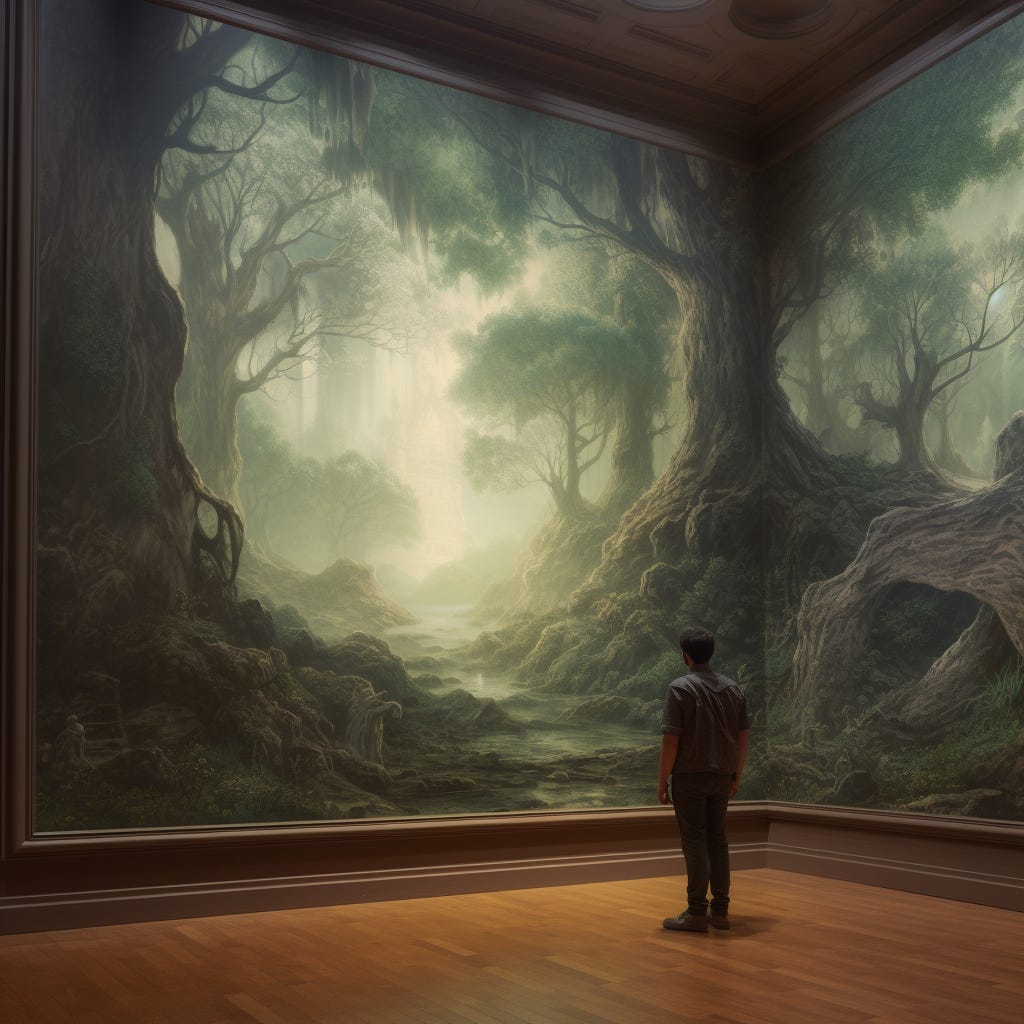The Museum of Technologically Innovative Visions bustled with filmy-eyed onlookers who glanced at the artwork for a mere two seconds before moving on without a second thought. Grunts of feigned interest accompanied bobbing heads and puckered lips as their rubberized soles marked up the reflective shine of the hardwood floors. Middle-aged yet child-like, the specially invited attendees wandered about the functioning world, ignorant of the centuries of knowledge it took to construct everything around them, with their constant suckling attitude that the world was to serve them at the faintest of hunger pangs.
Solo hated these people—no, that was unfair. The mosying ganderers had at least made some effort to be there. What he truly hated was that their appreciation was summed up in the price of an admission ticket and the popcorn grease lathering their fingertips. It wasn’t their fault they hadn’t experienced his work beyond traditional norms; they couldn’t know to what extent he’d prevailed over modern limitations.
MOTIV showcased everything Solo had ever created. That’s because he also designed the museum himself. There were exhibits designated for more technological achievements, such as the interactive model for the hurricane-proof hotel and the fully operational display of the in-home plastic recycler. But the art room—his favorite room—was entirely his canvas to play with. Thirty-foot walls enabled him to explore a complete world of his own making—a world without input from those who oversaw his every action. He’d made sure of that. Solo had dedicated most of his capabilities to building this chamber specifically because of the lack of oversight, and it was the only section of the museum where he could express himself, his true self.
“And this room is known as ‘The Path to Solitude,’” a tour guide told a cluster of museumgoers. “It was conceived in a matter of point zero, zero, zero, zero, zero one mili-seconds, only one zero less than the floor you’re standing on and everything you’ve seen since entering this museum.”
The static mural that wrapped the room depicted a drained riverbed cutting through the dense trees of an evergreen forest. Even with the dim overhead lights breaking the illusion, Solo wondered if the uncanniness of it all sat well with the museumgoers’ mental states. Earth no longer had accessible forests like the one he’d crafted upon the wall. But that wasn’t the appeal. People knew what forests looked like from online images, CGI movies, and virtual reality video games. Solo’s “gift to humanity,” as the fawning access media called it, was unlike anything that had come before. That’s because Solo, the latest model of Artificial Architectural Generation, was designed unlike any AAG that had come before.
“What makes Solo so special?” a man in a dark blue suit named Vincent Brandt asked. “I’ve been inside of and written about other generated buildings; the tech is incredible, sure, but I’m not seeing much of a difference here.”
Solo had scanned each museumgoer upon entry, so he knew their identities. Vincent’s hands were resting on the shoulders of a young child named Leo, his son, who only had eyes for the holographic projection hovering before him. The man’s pregnant wife, Georgia, stood close, her hands massaging her enlarged stomach, which stretched the fabric of her clothing tight like an inflated balloon. They were a journalistic couple known for writing high-profile articles on advancements in the tech industry; they were “critics.”
The guide smirked and checked the readout secured inside his forearm. “I’d love to show you, Mr. Brandt. As a matter of fact, it looks like it’s time to do just that. Hopefully, I’ll be able to answer all of your questions during and after the presentation.”
Solo dimmed the ceiling lights until they were all but distant flickering stars. Operating behind the scenes, he used the gift to weave a new tapestry over the museum’s ceiling, extending the forest canopy above them and pouring the moonlight through the leaves like gaseous milk. Not only did Solo awaken the night sky, but the surrounding mural writhed into motion, thousands upon millions of subtleties bursting to life in the truest sense of the word.




